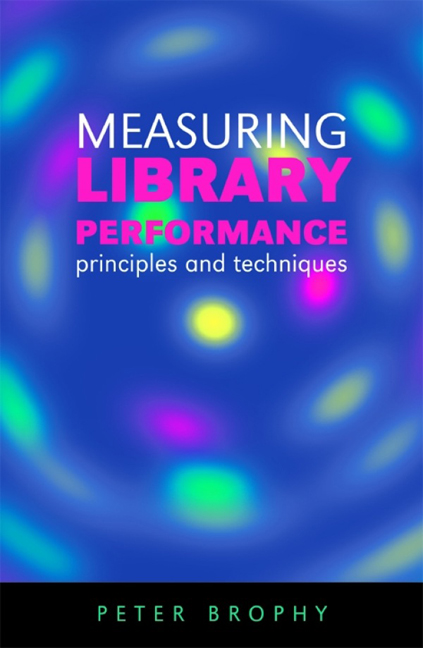Book contents
- Frontmatter
- Contents
- List of figures
- List of tables
- Preface
- Acronyms and abbreviations
- 1 Background
- 2 Theoretical considerations
- 3 User satisfaction
- 4 Impact on users
- 5 Social and economic impact
- 6 Inputs
- 7 Processes
- 8 Outputs
- 9 Staff
- 10 Infrastructure
- 11 Services for all
- 12 Benchmarking
- 13 The balanced scorecard
- 14 Standards
- Appendix 1 Data collection methods
- Appendix 2 The analysis of data
- Appendix 3 The presentation of results
- Index
- Frontmatter
- Contents
- List of figures
- List of tables
- Preface
- Acronyms and abbreviations
- 1 Background
- 2 Theoretical considerations
- 3 User satisfaction
- 4 Impact on users
- 5 Social and economic impact
- 6 Inputs
- 7 Processes
- 8 Outputs
- 9 Staff
- 10 Infrastructure
- 11 Services for all
- 12 Benchmarking
- 13 The balanced scorecard
- 14 Standards
- Appendix 1 Data collection methods
- Appendix 2 The analysis of data
- Appendix 3 The presentation of results
- Index
Summary
There are two competing maxims concerning performance measurement:
If you can't measure it, you can't manage it.
and
What gets measured, gets managed.
This book is an attempt to steer a course between these two, perhaps overly cynical, viewpoints. Performance measurement is vital to management. Without clear and reliable information about what is happening within an organization and in its interactions with its customers and suppliers, it is impossible to make well founded decisions to guide future development or even to monitor the effects of decisions that have been made in the past. Equally, there is always a danger that managerial attention focuses on the data that happen to be available, rather than on the rounded picture of all activities, including those which are by their nature very difficult to measure. The effect of this is that the wrong activities are prioritized and incorrect assumptions made about performance. So both dangers – attempting to manage without measuring performance and managing sub-optimally by concentrating on the information that happens to be available – need to be avoided.
Libraries have been measuring their performance for a very long time. However, whereas for many years the key measure was the size and quality of the bookstock, in more recent times attention has shifted towards the effects that the library has on the population it is intended to serve. Measures concerning stock and the provision of access to local and remote resources remain important but it is now recognized that, without a user focus, it is all too easy to lose sight of the purpose for which libraries exist and are funded. For this reason, this book is organized with its initial emphasis on the user – on satisfaction and impact – and only then on the library's processes. It is hoped that this will indicate the priority that needs to be given to these issues.
Performance measurement can never be more than a tool. Its techniques and approaches are designed to help managers to discover how well their services are performing, to identify where action is needed and to monitor what is being achieved. It may also be used to support advocacy for libraries.
Information
- Type
- Chapter
- Information
- Measuring Library Performanceprinciples and techniques, pp. xv - xviiiPublisher: FacetPrint publication year: 2006
